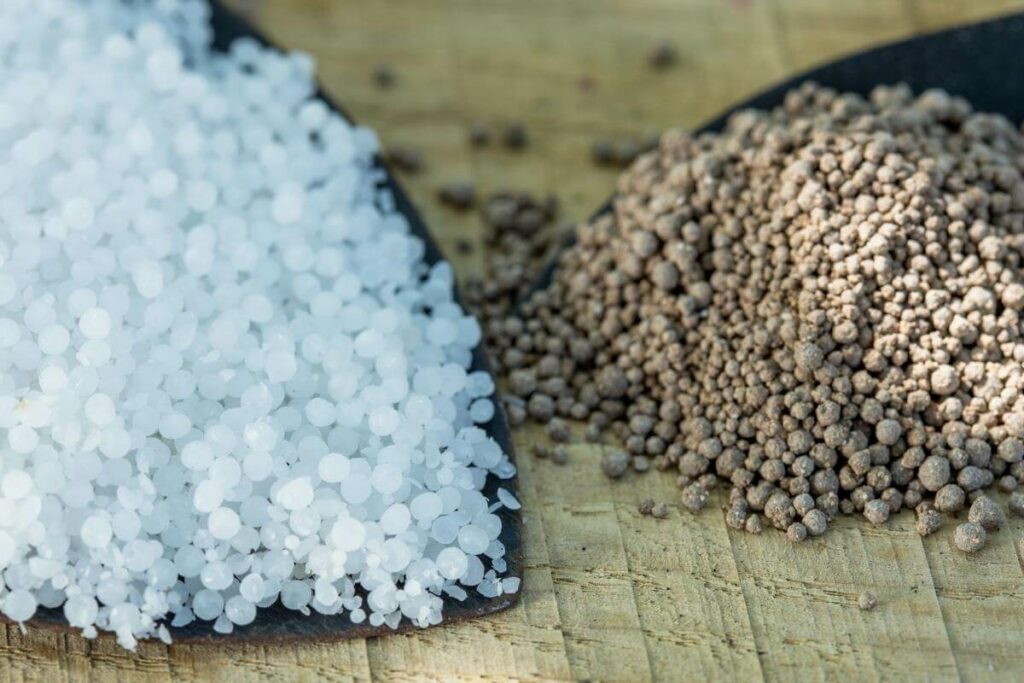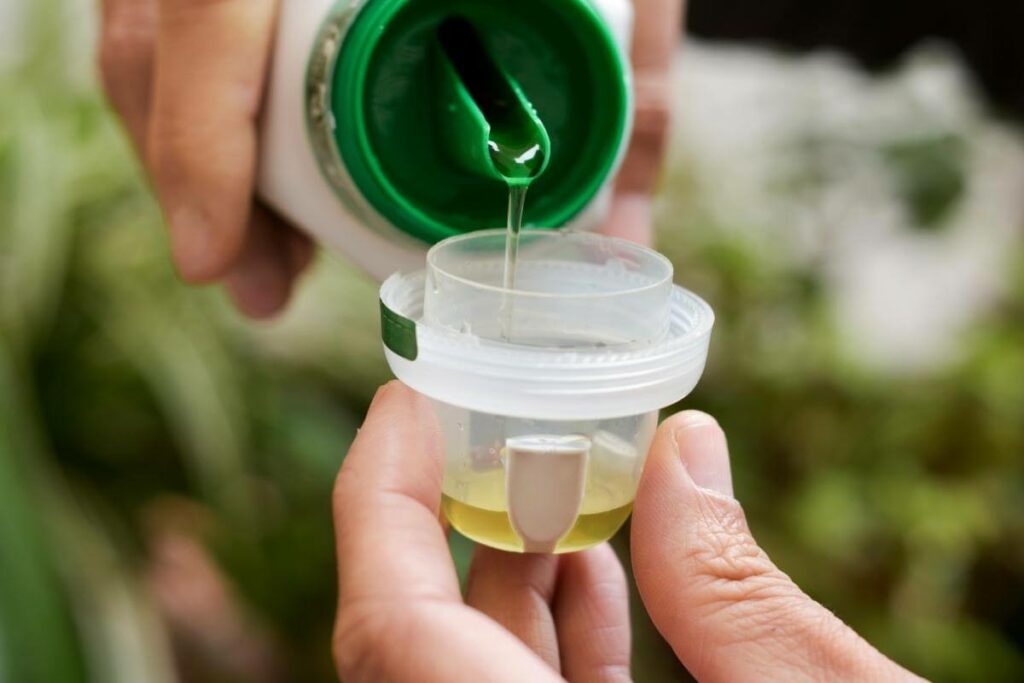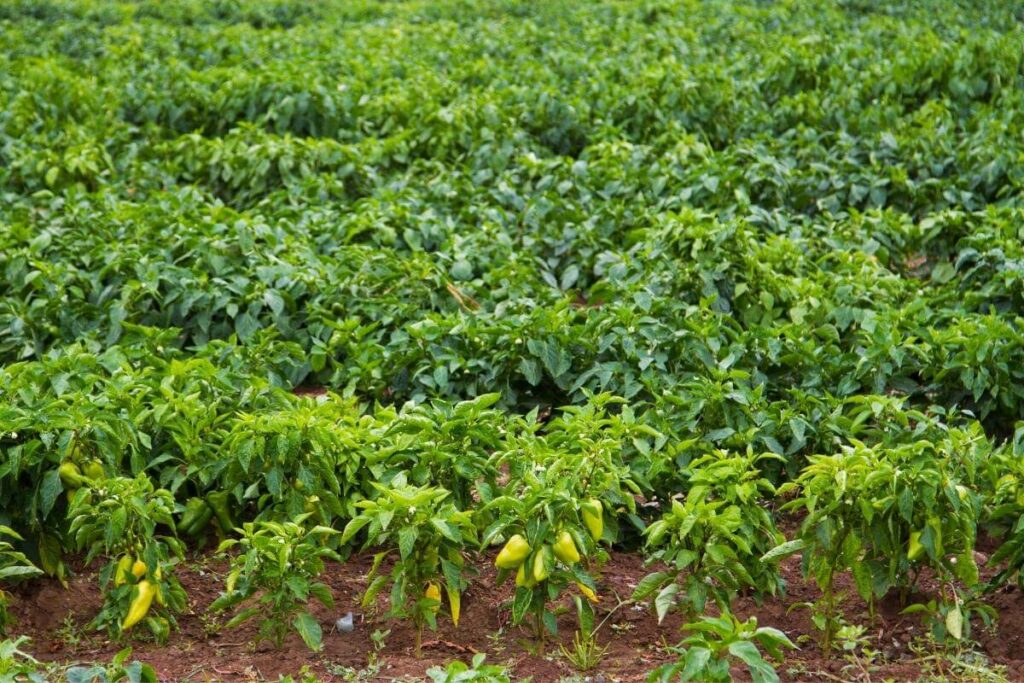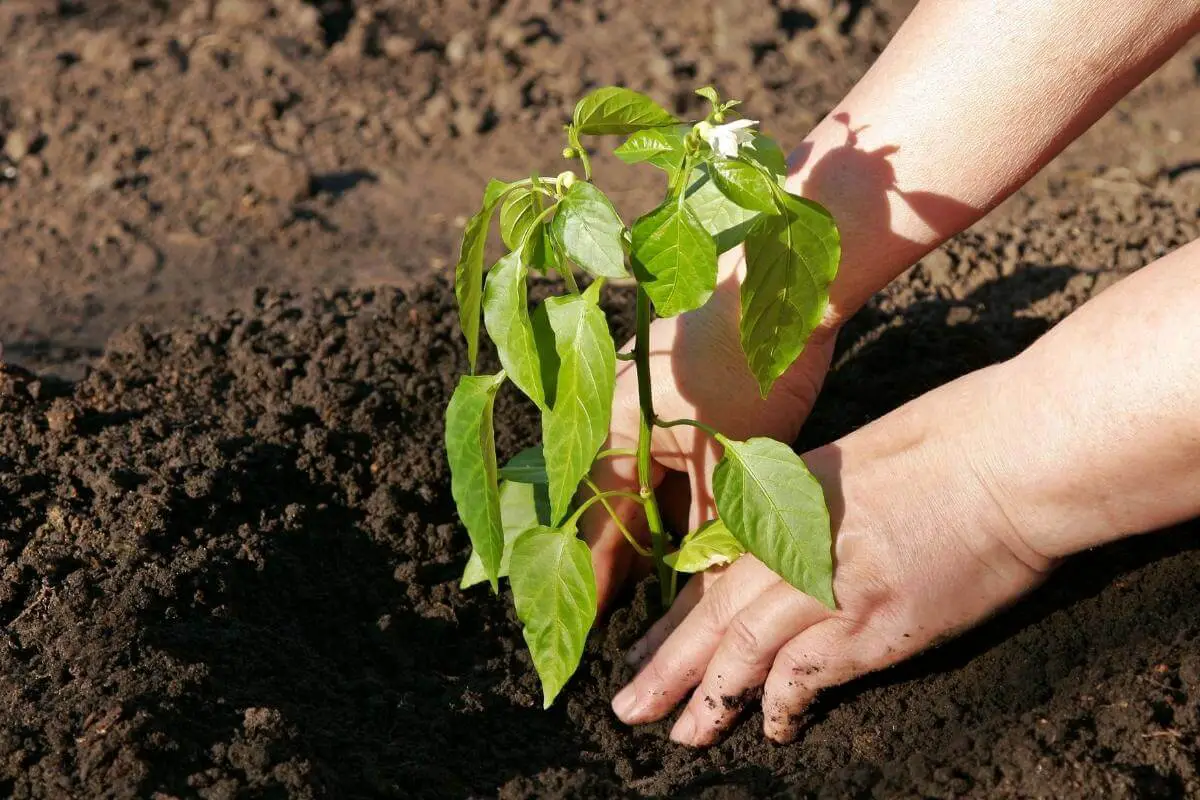Fertilizers are essential in helping your pepper plants grow healthy and produce a bumper harvest.
However, it is a bit overwhelming picking the right product from the wide array of options available online and in stores.
That said, the best fertilizer for pepper plants needs to have an NPK value of 5-10-10. This translates to five parts of nitrogen for every ten parts of phosphorous and potassium, respectively.
We have undertaken the mandate to gather all the information you need about fertilizers for pepper plants.
What You Will Learn: At the end of reading this guide, we guarantee you’ll know what makes a fertilizer best for a pepper plant and how and when to apply it correctly.
What Is the NPK Value?
When shopping for the best fertilizer for your pepper plants, you must have encountered a set of three numbers pasted on the packaging. This is referred to as the fertilizer grade or the NPK value, which is typically an acronym for Nitrogen (N), Phosphorus (P), and Potassium (K) content in the bag.
These three are the essential nutrients your pepper plants need to thrive.
- Nitrogen gives plants chlorophyll, which assists in vegetative growth, making the plant lush and leafy. It is essential in the early stages of growth, but you should lower its concentration as the plant begins to flower. Using a fertilizer with high nitrogen content may prevent the plant from flowering, which will affect the plant’s capacity to bear fruits.
- Phosphorus aids in the growth of root and flower systems and enables the pepper plant to consume solar energy. Potassium boosts the plant’s resistance to disease. More so, it plays a crucial role in the flow of water and nutrients to produce healthy peppers.
The best fertilizer for pepper plants needs to have an NPK value of 5-10-10.

This translates to five parts of nitrogen for every ten parts of phosphorous and potassium, respectively.
This is the perfect combination for a healthy-looking plant with a high yield capability.
Types of Pepper Fertilizers
| Type | Granular fertilizer | Liquid fertilizer | Powder fertilizer |
|---|---|---|---|
| Form | Granules | Concentered liquid | Fine powder |
| Application | Mix into soil | Dilute | Dissolve |
| Advantages | Easy to use Long-lasting | Fast absorption Versatile | Longer shelf life Budget-friendly |
| Disadvantages | Corrosive to seedlings | Easily washes away with rain | Time-consuming preparation |
| Tools | Spreader, Shovel | Watering can, Garden hose, Canister | Watering Can, Garden hose |
Granular Fertilizers
Granular fertilizers are slow-release fertilizers that can last for an extended period.
The granules have a water-permeable coating which under the appropriate soil temperature will slowly release its nutrients as more water penetrates the coating.
Apply the granules in a circle around the base of the plant without them touching the pepper plant.
The granules are concentrated, which may burn the plant, which may result in it withering.
Water the granules to steadily seep into the soil and consequently be absorbed by the roots.
If you have a large field of pepper plants, this is the best fertilizer to use.
Best Strategy: Measure out the manufacturer’s recommended amount of granules and mix them into the top two or three inches of soil. Usually, the recommended rate of usage is 2-3 pounds per 100 square feet.
Liquid Fertilizers
These fertilizers come as concentrated liquids.
You dilute them in a predetermined amount in water before spraying them onto your peppers.
Unlike granular fertilizers, they are absorbed into plants quickly.

However, they need to be reapplied after a few weeks or a month.
Ensure you spray the plant at the base of the stem line rather than over the leaves, as there is a good chance it could burn the stems or leaves.
Additionally, since wet leaves can spread bacteria and fungi, do not trim the plant or muck around the soil, spreading diseases further.
Powder Fertilizers
In making this fertilizer, nutrients are ground into a super fine powder to dissolve easily in water.
Once thoroughly mixed in water, you apply them the same way as you’d apply liquid fertilizer.
They are rather inexpensive and boast a longer shelf life than the other fertilizers.
When to Fertilize Pepper Plants
You may apply the right fertilizer, but you won’t get the desired results if you don’t get the timing right.

For optimal growth, it’s important to remember that pepper plants have different nutritional needs when sprouting and producing pepper pods:
- Pepper seedlings require adequate nitrogen to establish strong roots, stems, and leaves. Before transplanting, mix a nitrogen-rich fertilizer with the top few inches of the soil. Be careful not to use too much fertilizer as a high concentration may end up killing the seedlings.
- When your pepper plants begin flowering, it’s about time to apply some more fertilizer. At this stage, more phosphorus and potassium are required to boost the production of pepper pods. A fertilizer with a 5-10-10 NPK ratio would be ideal as it contains a lower nitrogen level.
- After applying fertilizer, it’s recommended to add a layer of mulch to the base of the plants. This helps to keep the nutrients intact and the soil moisturized. Apart from serving as a buffer against evaporation, the mulch can add some valuable nutrients to the soil.
Frequently Asked Questions
When is the best time to apply pepper fertilizer?
Apply fertilizer during the early morning hours or in the evening.
If you put it on when the sun is hot and bright, it will evaporate the moisture before the roots have a chance to uptake it.
Furthermore, don’t apply fertilizer when it’s raining as there is the risk of it being swept away.
How do you tell if there is a fertilizer deficiency?
Small yellow leaves, poor flowering and no fruit growth are signs of nutrient imbalance in the soil.
However, before adding some more fertilizer, it’s important first to conduct a soil test.
Test the pH, acidity levels, and soil mineral composition to determine which remedy measures you should undertake.
How often should you fertilize peppers?
This is largely determined by the manufacturer of fertilizer you are using.
Luckily, most manufacturers provide guidelines on when to fertilize your peppers.
Follow the guidelines and resist the temptation to over-fertilize as it does more harm than good to the pepper plants.
Why is my pepper plant developing brown spots on the leaf?
This is usually a result of your administering too much fertilizer.
Cut down on the usage of fertilizer and flush the pepper plants with nutrient-free water. These will then remove excess minerals and salts from the root system.
However, do not use too much water that the soil becomes soggy as the roots will rot, hindering water and minerals absorption.
Conclusion
It would seem ideal to choose the 5-10-10 fertilizer; however, the answer is not always that straightforward.
This is because pepper plants require different levels of nutrients at various stages of their growth.
It is essential to get the right type and amount of nutrients to the plant at the appropriate time it’s needed.
You can use two different types of fertilizer for the two growth stages to get the best possible results.
Ultimately, each brand has its own unique set of instructions and recommended measurements.
Whichever fertilizer you settle for, follow all these manufacturers’ instructions to the letter to get the best out of your fertilizer.
Also Useful
- Bokashi vs Vermicomposting: Which Is Better?
- How Often Should You Water Grass Seeds?
- Why Are My Cilantro Stems Turning Purple?
